Pitching up a tent can seem to be an overwhelming task. There is a considerable measure of material, pegs, poles and issues to negotiate on.
While there are campers who have their own method of pitching sharpened down to a bore, there are also some who discover this is an issue which can bring about anxiety, anguish, contentions, and even separations. If there is anything to carefully learn about before going outdoors, it is definitely how to pitch a tent.
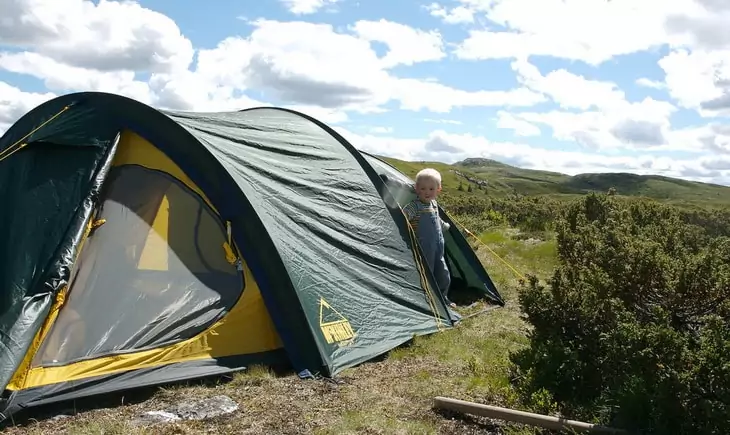
Aside from the fact that it is less humiliating to battle with the tent’s fabric in your own privacy, it is a formula for an awful start to the occasion to discover there is an important part lacking on the first day of your camping trip. It is much better to have a go at everything out before embarking on your trip. To help you plan for your outdoors, we have prepared some guidelines on how you can efficiently and effectively pitch the perfect tent, even if you are a novice in pitching tents.
Important Things to Consider and Do Before Pitching a Tent
There are a couple of bits and pieces you need to do before actually embarking on pitching a tent:
- Check your tent before setting out: Before setting out for your camping trip, ensure that you check out your tent and that all things are already in place. You would not want to put the tent up only to discover that there is a nasty worn out part in there. You need to also carefully check new tents again, just to be erring on the side of caution. Put your camping tent up in your backyard or even a close-by field so as to ensure that all are in place. Here is the reason checking your tent prior to camping is so vital.
- Be aware of every single local regulations and guidelines: Make your camping event on lands where it is permitted by the local regulations and ensure that you are aware of any restrictions. Many national and state parks have broad rules laid out on their sites. Always follow every rule and regulations, without leaving anyone untouched and pack out everything you pack in. Failure to follow the camping rules, ruins the experience for campers who come after you
- Ensure you have a consumable water source: Before putting down your backpack and starting to unload your tent, ensure that you know the location where your source of water is, regardless of whether it is a stream, well or lake. Set up your tent nearby, but not very near your water source. This will definitely make it effortless to fetch some water when you begin to cook or if you are in need a cup of water amidst the night, but always ensure that you don’t pollute the water source coincidentally
- Thorough inspection of campground: This one sounds obvious, however, even seasoned backwoods adventurers commit errors with this. Simply because a territory looks good and nice and like an awesome place to camp, many perils can destroy a splendidly nice tent site. Grass is the conspicuous first decision for a material to set up your camp tent on, however, ensure that no stones or rocks are concealed in the leaves. Likewise, be careful about low areas in the grass. In the event that the climate gets ugly, these low spots can be filled with water and doused through the ground of your tent. Mosses, leaves, and wood chips are also great alternatives if grass can’t be gotten. Once more, be careful about rocks and other dangers that can stow away just underneath the surface and can place holes in the ground of your tent.
- Consider where will you make your daily business: When picking a campground, it is essential to consider every area of life in camp — and that incorporates heading off to the restroom. Ensure that you locate a reasonable area, no less than 200 feet far from the closest water source. This will keep the source of water clean and drinkable. Read our piece on how to pitch your own camping bathroom so you’ll have privacy doing your daily toilet activities.
- Consider the wind: After locating a good pitching area, check the wind bearing and conjecture. Always set up the foot of your camping tent in the wind area. This is its most streamlined position and will limit commotion from wind fluttering. On the off chance that the wind changes amidst the night, even if it sucks, stand up and rearrange your tent. This will surely help decrease the danger of the tent tearing in breezy condition.
- Do not do the pitching alone: Unless you are on camping alone, get somebody to help you set the tent in order. This is especially essential in the event that you have a vast tent, as attempting to do everything without anyone else will either take you a lot of time or, more probable, end in contemptible disappointment. Even when it comes to two-man tents, if there is another person there to give you a helping hand, acknowledge their help and you will be kicking back and unwinding much quicker.

The Ideal Spot to Pitch a Tent
Setting up a tent can be an amazingly difficult and exhausting undertaking for amateur campers. It can be much more exhausting to have to redo the task after a fizzled endeavor. Pitching a tent is the suitable location—where you set up your tent will significantly affect the safety and comfort of your campground. Make your outdoor trip a smooth one and prevent any shocking set-up difficulties by following these tips so as to discover the perfect camping spot.
Pick flat ground
The most essential thing to search for when finding an ideal campground is flat ground since it could mean the contrast between a great night’s rest and awakening to nightmarish environment. You will probably get a comfortable night’s rest in places strewn with pine needles, grass, sand or soil, rather than covered with roots and rocks. Established campsites will definitely keep up level and safe locales to set up your tent, in many cases with streams or glades as a grand setting.
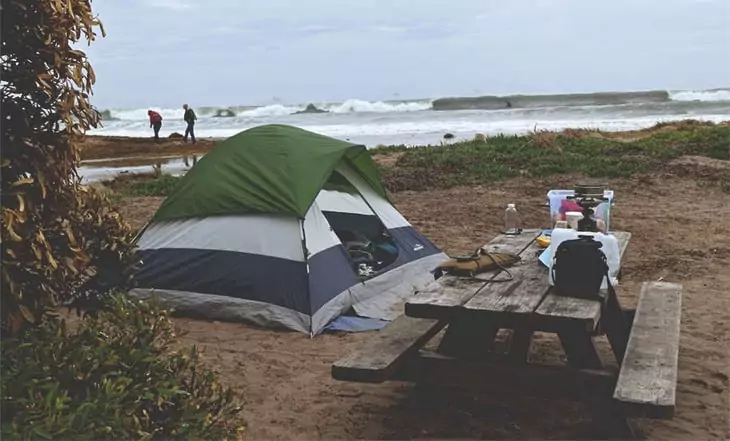
When you locate a comfortable and large spot, sufficiently substantial for your tent, utilize a small rake or comparable tool to brush off any sticks, tree branches or stones that may jab you while you rest. If you don’t have a rake, you can make use of your foot to clean your campsite of flotsam and jetsam. Before pitching your tent, survey the state of the ground by laying down your mattress or sleeping bag over the spot and confirming the level of comfortability.
Stay away from the Hills
Abstain from setting up camp anyplace on a hill, if conceivable. Regardless of whether you are on the top, base or center of a hill, these areas tend to pose a risk to your well being. Freshman campers may erroneously believe that it is a smart thought to set up camp in a valley at the base of a hill due to the fantastic security from the sun and wind effect. However, on the off chance that it rains, you may find yourself drenched up in a puddle of water or more terrible in a dangerous blaze surge.

Sometimes there may not be flat ground and you may need to settle for somewhat inclining ground. Ensure that you set your head on the uphill and with your feet facing downhill. In the event that you lie down, sideways, along the slant, you will unavoidably move to the other side of the tent, squeezing yourself into the material of the tent wall, making the tendency for getting moist from due to condensation.
Consider sun and wind exposure
Always search for a spot within close range to a shady area. A tent situated in direct sun will get to be sauna-like. There are some tents can be destroyed or endure untimely aging by the harmful rays of the sun, so make sure you check for tent care directions before wandering out into the wild.
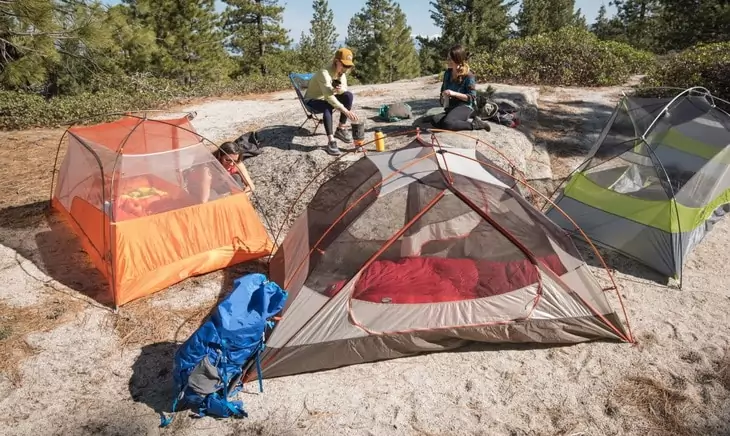
Likewise, as mentioned earlier, Search for a campground with a typical windbreak. Regardless of where you are camping, make an attempt to position your camping tent so the entryway is facing far from the wind for appropriate security against solid blasts. It will be extremely hard to get a great night’s sleep if your tent is fluttering in the wind throughout the night.
In addition, in case you are situated confronting into the wind, your camping tent will feel definitely colder as a result of the poor insulation.
Camping in the forest
Forested territories are famous destinations for outdoors. Most developed tent grounds will be flat and intended for tents. Boondocks locales will require somewhat more thought. Many developed locales will have harder pressed soils and will require strong stakes to ensure that the tent is grounded. Forested areas have assorted qualities of soil sorts.
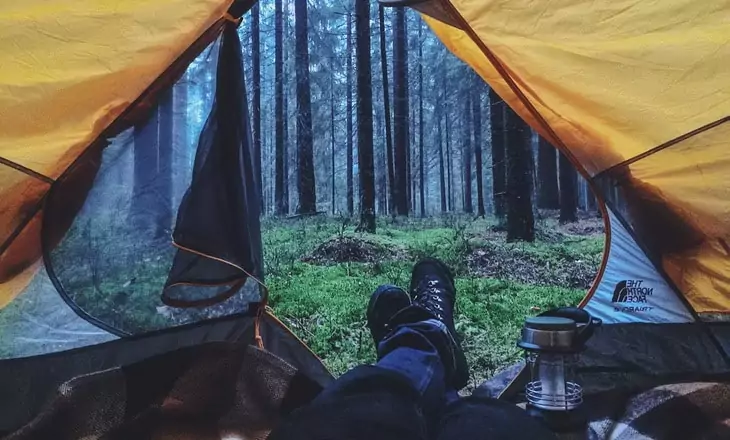
Some soils are difficult to infiltrate with stakes and some other soils are loamy and won’t retain stakes well. These issues of soils appear more in backwoods settings. Make sure you do some research on forested areas, soil types so as to ensure that you have the proper stake.
Camping in the Snow
When you are camping in the snow, if you notice that there is crisp, deep snow, abstain from choosing a campground close to trees, weighed down with substantial snow loads, which may fall in windbreak or amid hotter daytime temperatures. Furthermore, in the hilly landscape, stay away from the slopes and bowls that are inclined to torrential slide.
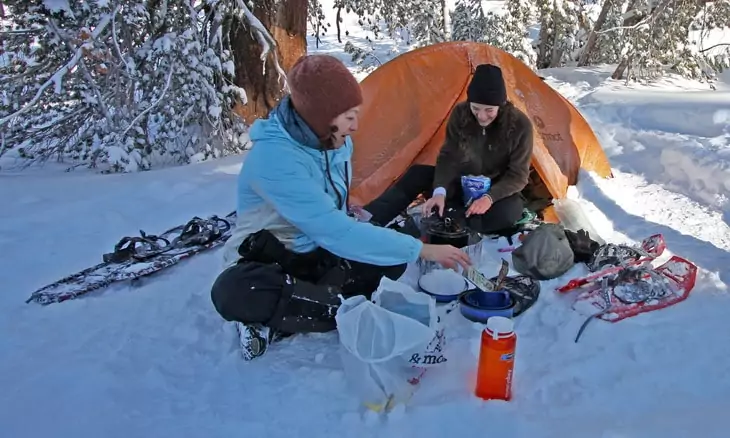
When you locate a proper spot, utilize your skis or snowshoes to trample the ground in order to create a strong, firm surface. Winter climate conditions may differ from one place to another, however, it is always more secure to buy a winter or 4-season tent for proper security against high winds and snow in uncovered tent locales. If you are planning on camping in deep snow, getting a snow stake will be very important.
Guidelines for Pitching a Tent
Camping is an amazing event in the late spring. Dwelling in a camping tent for a couple days is an awesome opportunity to unwind and get more in contact with nature. While it is a mostly fun event, getting the camping tent itself at the same time can be a real task, particularly in case you are not used to the intricate details of outdoors yet.
Although it might appear to be extreme at the beginning, most camp tents are made in view of the simplicity of-installation. While pitching a tent is generally really direct, there is significantly more required guides in making an effective campground. After choosing the perfect spot, here are the appropriate steps to follow in pitching a tent:
Step one: Unload your tent supplies
Once you have found the perfect spot to pitch the tent, it is the ideal time to unload your supplies. It is a smart thought to pack the entire parts at once. Setting up your tent will be faster on the off chance that you do not need to unload everything each one in turn.
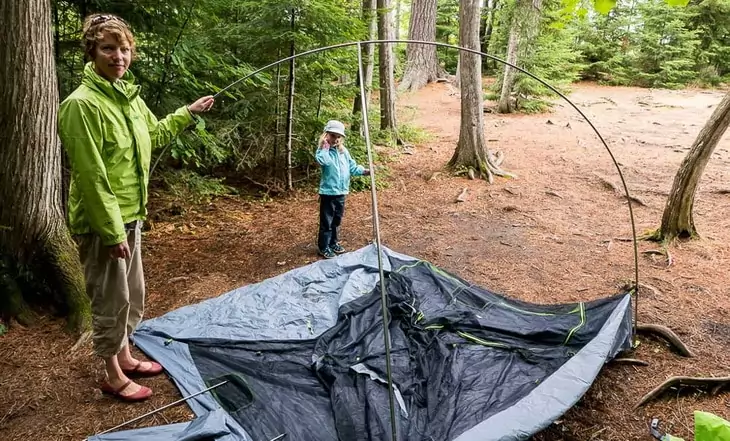
Keep all parts settled in a single spot so that you can keep a record of everything. Since the rundown of supplies relies on the particular tent type you’re utilizing, here are a couple of various tent kinds that you can consider:
- A-Frame tents: These tents are the most common and typical kind of camping tent for personal usage. They are definitely the simplest to erect and generally accompany extra items such as a weather tarp and rainfly.
- Tunnel tents: These tents are not quite the same as the A-Frame tents since they are organized by two long posts that both project the tent’s wind. This makes a more extensive inside with more head space. But, they are not almost as steady with regards to wind.
- Dome tents: These tents are typically the biggest, and usually held for bigger gatherings in camping. In spite of the fact that they are pretty much bigger, they are generally simple to pitch.
Step two: Set out a ground fabric
No matter the extent to which you clear the campsite, there may possibly be twigs and some other form of debris that could most likely damage your camping tent or make the surface generally awkward.
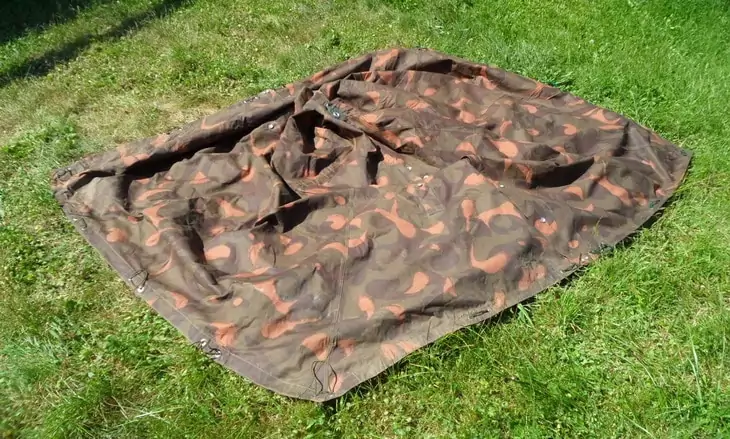
A ground fabric should be sufficiently huge to cover the room of the greater part of your camping tent. The included pad of a ground fabric will prompt to a comfier rest. Learn more in our article whether to use tent footprint or tarp in order to have the best material for groundsheet.
Step three: Embed the poles of the tent through the frame
On the off chance that you have gotten all your tent sections out, slide the bolster poles through the tent’s body. Lay out the tent frame. Along that line, you can ensure that you are inserting the poles into the appropriate slots.
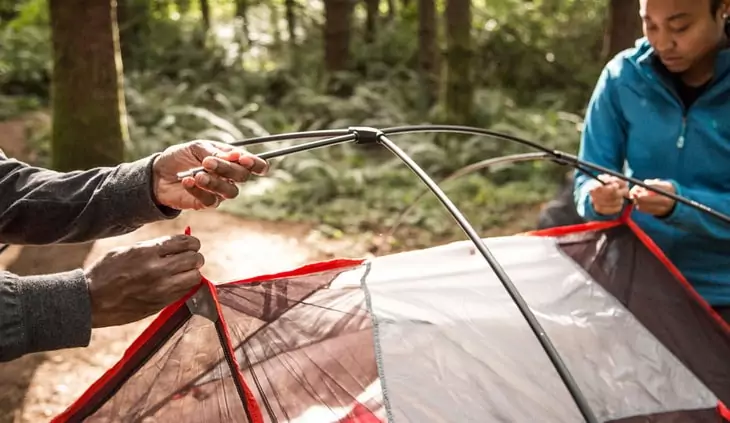
This is apparently the most tedious part of tent arrangement, yet it is very direct. With regards to a “tunnel tent”, ensure that the tent poles are parallel with each other.
Step four: Raise the tent
In case the bolster poles have joints, all you have to do is to make them to be rigid. The support poles will have a pre-set edge to them for the tent’s body. Raise the tent up by elevating parts of the tent’s body.
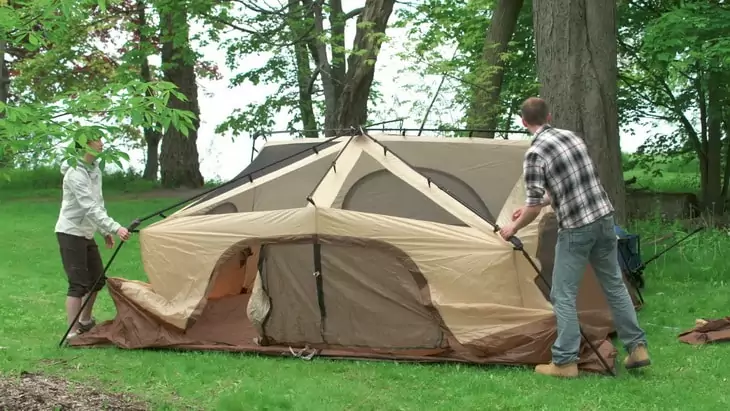
The support poles should hold firm the frame in order. If not, secure the loose pole parts or broaden them as required. For the best family tents that you can use, see our reviews on these to give you more options.
Step five: Hammer in the tent pegs
Utilizing a hammer or a close-by stone, get the spikes that accompany your tent and sledge them into the campground. This will balance out the tent and ensure that it does not shake.
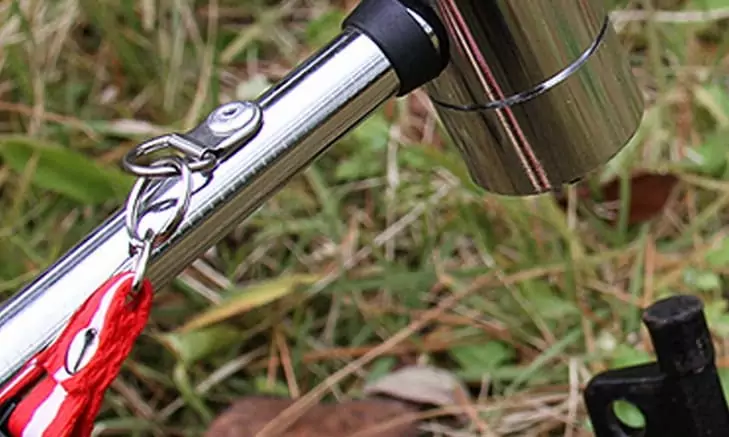
If you do not have tent pegs for reasons unknown, you can enhance by utilizing strong sticks and forcing them into the soil.
Step six: Set up the rainfly
It is imperative to remember that tents all alone are generally not water resistant. This is the place the rainfly shows up. A rainfly is an extra piece you place over the top of the tent. There ought to be a thing along the path of locks on the tent’s roof to put the rainfly set up.
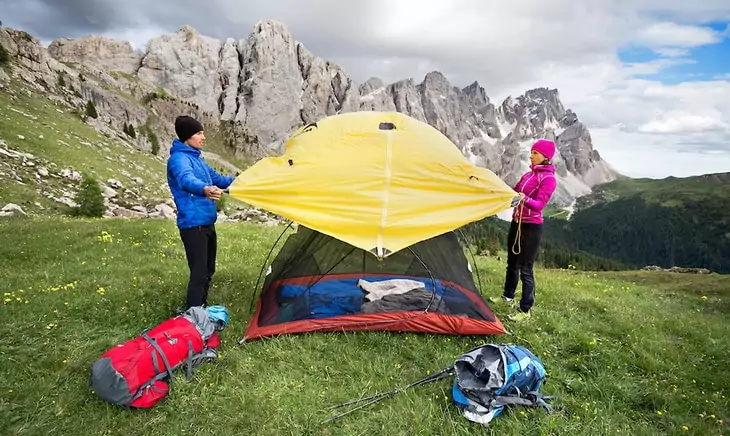
Regardless of the possibility that you’re almost certain there will be no rainfall, it does not hurt to install it in any case. It will definitely ensure that your whole tent gear stays close-by, and set you up for unanticipated rainfall.
Step seven: Move your backpack into the pitched tent
Once you have already set up the tent, you can equip and design the inside. Since there isn’t generally much room in a tent, you ought to choose which things are okay to retain outside, and also the things that should be retained inside. Mattress or sleeping bags are a conspicuous gear that should be in your tent. You can retain hard-cased storage and crates outside the tent.

In the event that there is a danger of bears in the region you are camping, it is highly suggested that you keep your food packs out of the pitched tent. And if a bear comes around, you won’t want him scavenging into your camping tent since he got the aroma of granola.
Wrapping it Up
When you are choosing a spot for your camping tent, you have to glance around. Having a tent pitched up in the daylight amid the day can do a considerable measure to keep it warm when you get into it. It may not appear to be much, but rather it can have any kind of effect. Another thing to pay special attention to are tree branches above you. Snow generally adds weight to branches and old tree branches have a possibility of breaking. Ensure that your camping area looks safe before embarking on setting up a tent.
As you may have seen, setting up a tent will likely take a longer time. This implies that you need to give yourself much time to properly complete it. And since it will surely get darker than normal, you should begin early. Winter Camping isn’t that difficult, the thing is that it is just unforgiving when you commit an error. Pitching your tent is the same. Ensuring that you have a lot of time and that you do the pitching in the right way will give an awesome head-start on your camping adventure.
See our informative article regarding how to camp alone and say safe – it’s a must read.

Would you like to share your experience as regards to pitching a tent with us and our readers? If yes, you can leave us a comment in the comments section below. You can also ask questions regarding this topic, if you have any. Happy tent pitching folks!







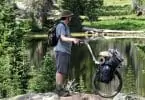
Not being keen when pitching my tent almost cost my friend his tent when it began raining and strong winds blew his tent away. He was sound asleep but when his tent got blown off, he had to wake everyone up to help him pitch his tent again, and that’s when I learned that pitching up a tent in the dark and in the rain can be quite cumbersome.
Oh wow! Thanks for sharing.
During my first days as I hiker, my friends and I were unable to complete a trail by dusk and we decided to pitch out tents close to a river. Little did we know that there was a heavy downpour upstream and there was going to be flash floods that almost slept our tents away at night; leaving us wet, cold and confused. From that experience, I always avoid pitching my tent in valleys or so close to rivers.
Thanks for letting us know!